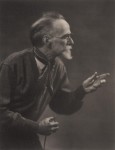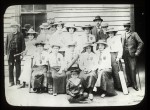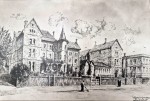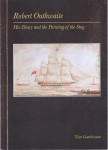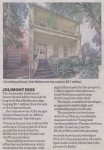Welcome
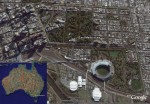 Welcome to the East Melbourne Historical Society.
Welcome to the East Melbourne Historical Society.
East Melbourne is a tiny suburb adjoining the city of Melbourne bounded by Treasury and Fitzroy Gardens to the west, Victoria Parade to the north, Hoddle Street to the east and Yarra Park to the south, home of the famous Melbourne Cricket Ground. East Melbourne was included in Robert Hoddle's original 1837 plan for the city but the first private house was not built until 1853. The suburb today reflects a history of Victoria with its beautiful gardens, grand houses of the gold rush era and workmen's cottages. Cast iron lacework adorns the houses, bluestone cobbled lanes lead to old coach houses and brick dunnies. Artists, scientists, politicians, judges, educators, priests, explorers, entrepreneurs, courtesans, philanthropists and social activists lived here and many a tale is told of characters wild and exotic.
- Read more
- 24060 reads
Site statistics
Recent articles
Dr Julian Smith: surgeon and photographer
One of East Melbourne’s more notable residents was Dr Julian Smith: a remarkable man, famous in two very different fields, surgery and photography. Born in England in 1873, he arrived in South Australia with his family three years later. He studied medicine at Adelaide University but had to transfer to Melbourne when all the instructing medical professionals resigned.
- Read more
- 1133 reads
Grand Rank Cabman's Shelter
Cabmen’s shelters had been a feature of London streets since 1875. These little buildings provided much needed shelter for cabmen while they waited for customers. But it was not until 1898 that an anonymous benefactor put up the money to erect the first of Melbourne’s shelters. Architect Nahum Barnet supplied drawings without charge, which were based on one of the London shelt
- Read more
- 1855 reads
‘Better to have a loaf on the table than a loaf in the Pub’
The Band of Hope was formed in England in 1847, with a more formal organisation set up in 1855. It was seen by many as a way to develop self-reliance in working men who could use temperance as a means to self-improvement by renouncing alcohol. It was a non-denominational movement, with branches set up by both Protestant and Catholic communities.
- Read more
- 1796 reads
The Early Days of Women's Cricket
- Read more
- 1975 reads
Remembering Joyeux
366 Albert St., East Melbourne, lies on the north side of the street between Lansdowne and Clarendon Streets. The house was built in 1909 for the Rev. Llewelyn David Bevan on the land which had once been the garden of the neighbouring house, No 364, which Bevan also owned. The house is built to the footpath, unusual for its time and the East Melbourne area.
- Read more
- 1590 reads
Recent acquisitions
On the Street Where we Live. Glimpses from the past. Exhibition 2013
A collection of large format photos used for EMHS Open House exhibition held at The Menzies Foundation, Clarendon Terrace during Open House weekend, July 2013.
Each photo is in a protective sleeve with supporting photos included. Housed together in a Zetta Florence cardboard carry bag.
Contents as per sheet included with the photos explaining layout:
- 837 reads
Presbyterian Ladies College Image 1956
Framed drawing of Presbyterian College, East Melbourne viewed from Albert Street 1956 by Herbert Moore. Moore was an architectural draughtsman who was known for his pen and ink drawings of old buildings.
- 843 reads
Victorian Historical Journal December 2023
Articles on aspects of Victoria's history
Lectures:
Wurundjeri Woi-wurrung Histories in Early Colonial Melbourne: Country, Ancestors, and the Management of Newcomers. Karen Jones & Rachel Standfield
Protected Industries Protected Men: The Dilemmas of Wartime Servivce 1939-46. Bert Zino & Brad Underhill
- 913 reads
Robert Outhwaite: His Diary and the Painting of the Stag
Robert Outhwaite was a passenger on the Stag, the same ship which in 1847 brought to Melbourne its first bishop, Charles Perry, and his wife, Frances. Frances Perry wrote about the voyage in her journals, in his diary Outhwaite gives another view.
- 983 reads
124 Jolimont Road - sale
Report of the sale of property at 124 Jolimont Road, Jolimont, known as Dyason House, headquarters of the Australian Institute of International Affairs. Sale price was $5.7m. The property is a few doors from Eblana, 140 Jolimont Road, which also recently sold for $6.45m.
Note: the image has been reformatted for clarity.
- 1104 reads

